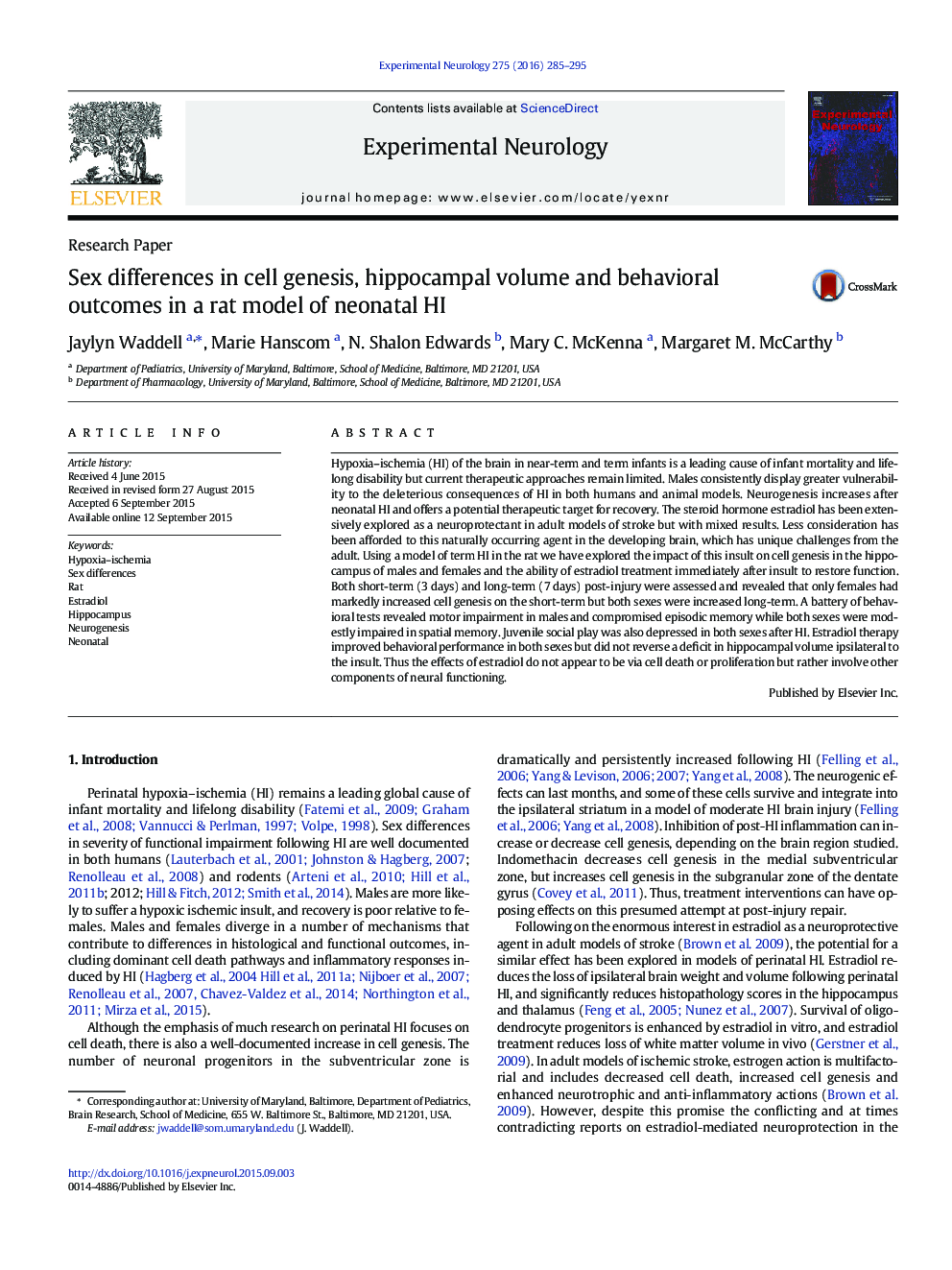| Article ID | Journal | Published Year | Pages | File Type |
|---|---|---|---|---|
| 6017429 | Experimental Neurology | 2016 | 11 Pages |
Hypoxia-ischemia (HI) of the brain in near-term and term infants is a leading cause of infant mortality and lifelong disability but current therapeutic approaches remain limited. Males consistently display greater vulnerability to the deleterious consequences of HI in both humans and animal models. Neurogenesis increases after neonatal HI and offers a potential therapeutic target for recovery. The steroid hormone estradiol has been extensively explored as a neuroprotectant in adult models of stroke but with mixed results. Less consideration has been afforded to this naturally occurring agent in the developing brain, which has unique challenges from the adult. Using a model of term HI in the rat we have explored the impact of this insult on cell genesis in the hippocampus of males and females and the ability of estradiol treatment immediately after insult to restore function. Both short-term (3Â days) and long-term (7Â days) post-injury were assessed and revealed that only females had markedly increased cell genesis on the short-term but both sexes were increased long-term. A battery of behavioral tests revealed motor impairment in males and compromised episodic memory while both sexes were modestly impaired in spatial memory. Juvenile social play was also depressed in both sexes after HI. Estradiol therapy improved behavioral performance in both sexes but did not reverse a deficit in hippocampal volume ipsilateral to the insult. Thus the effects of estradiol do not appear to be via cell death or proliferation but rather involve other components of neural functioning.
